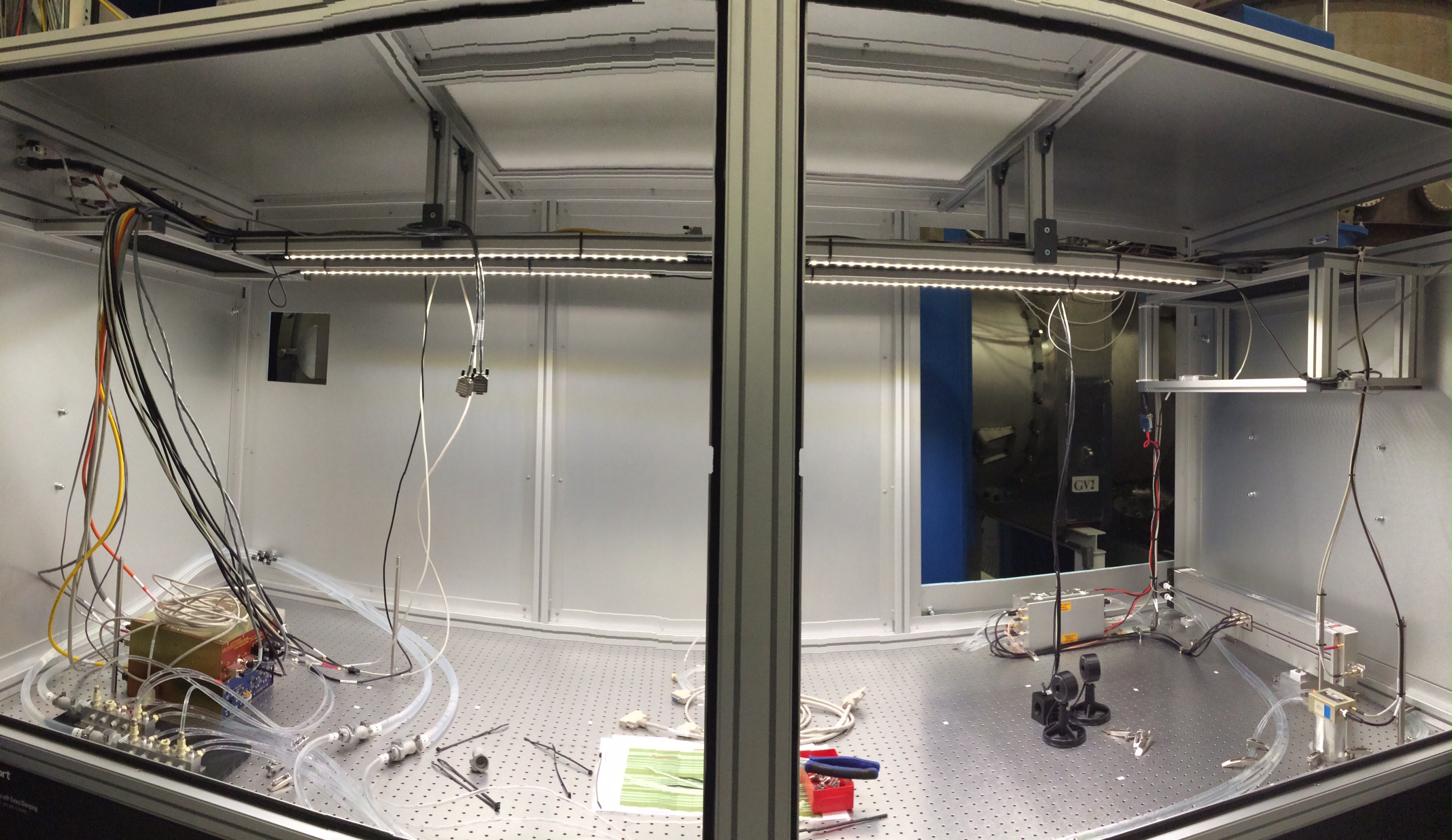I’ve been more or less solely responsible for commissioning ISCTEY at the end station, and the scope of the project has proven to be slightly larger than the amount of time I have left this trip. This is a summary of what’s left to do to finish commissioning the table. I’ve updated the
Blue Team Punchlist to put these onto an “Active Tasks” sheet.
PLL beatnote finding
The power and polarization of the fiber light has been drifting. As of yesterday, less than 40uW of power was making it to the table. Last week when Alexa and I first measured, we were getting more like 70uW. The polarization drifts over time, as expected and adjustable by the polarization controller. At the moment, the polarization monitor PD is aligned, but after aligning the PLL path, check to make sure this is still the case; it wasn’t aligned the other day, leading me to assume that the polarization was good when there was actually ~80% of the fiber power missing the polarization PD entirely.
For reference, the BBPD on the table has never been exposed to the shorted power cable, so any problems with it are not related to having been powered incorrectly. Also, remember to adjust the nominal power on the TMS green QPDs after optimizing the beatnote.
Analog video feedthrough
The analog video power cable is not connected because the feedthrough was filed out at some point, so the cable can’t be attached with screws. The two solutions proposed are epoxying the cable to the feedthrough or making a proper part. Either way, you will need to remove the feedthrough, fish the cable out of the table, install the cable, then replace the feedthrough. I have passed custody of this project on to Dick.
Wavefront sensing
The WFS paths are installed and nominally aligned, and the picomotor mirrors have been tested. The legacy WFS interface is in place at the EY field rack, but it is not cabled. Cables will need to be installed and the electronics will need to undergo the usual testing. The WFS on the table had good RF response in the EE shop but still need to be tested on-table. The return beam shape and quality also needs to be measured on these WFS paths.
Faraday mount
From the first beam measurement, it appears that the 532 path has some clipping. A new mount for the second Faraday isolator has been left on the bottom left corner of the table. This mount needs to be swapped in, and the beam needs to be realigned to the TMS using the irises on the table. Please check the iris position first, I placed them fairly well but I haven’t checked their positioning recently. The return path will also need to be realigned to the LSC RFPD and the wavefront sensors.
HWS pickoff
The Hartmann sensor path will need a pickoff from the return beam. I received the beam sampler from Aidan today, but the wrong mounts were sent from Caltech. Once we receive open mounts, this optic needs to be installed between the second pico mirror and the first iris, and the beam aligned to the irises to return to the TMS. Thomas has custody of the beam samplers and the less-than-optimal mounts.















